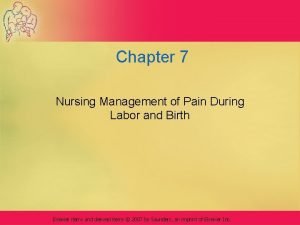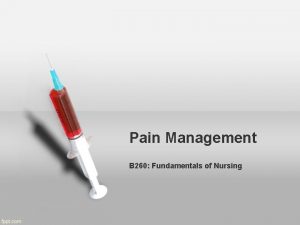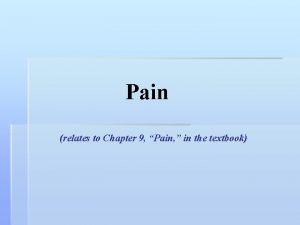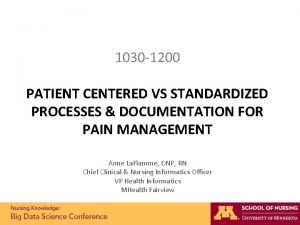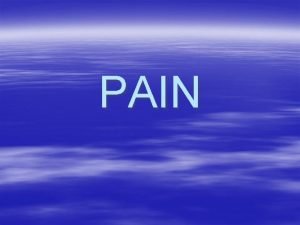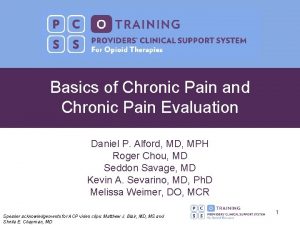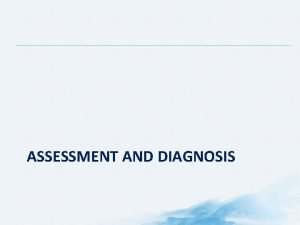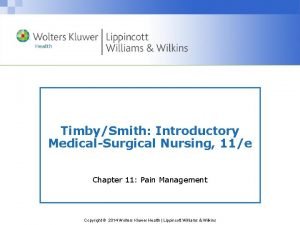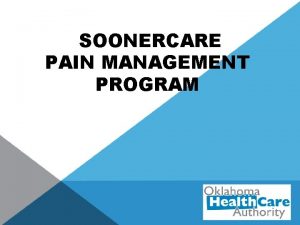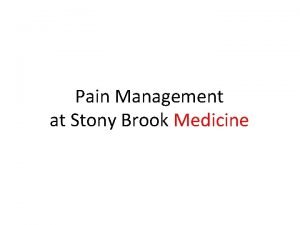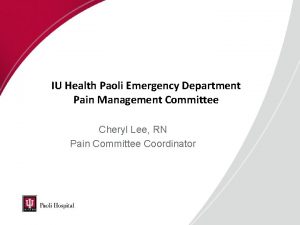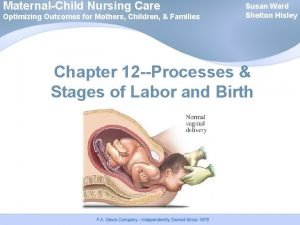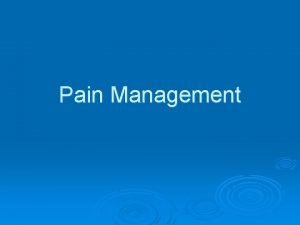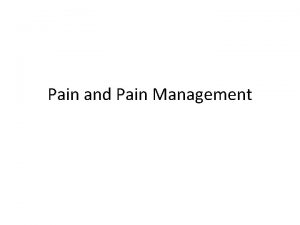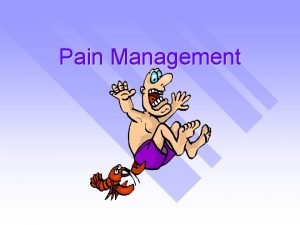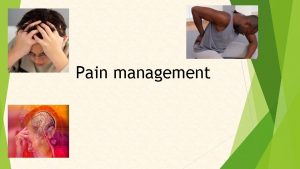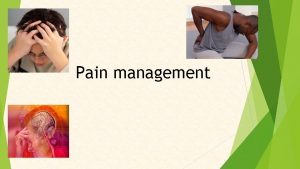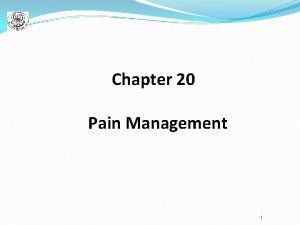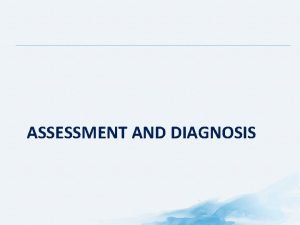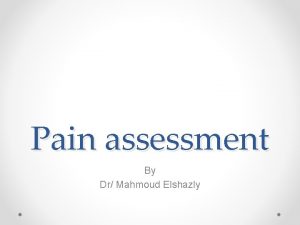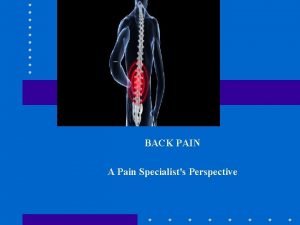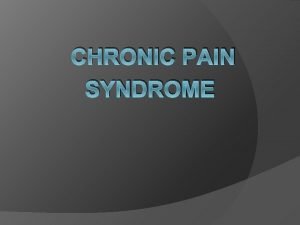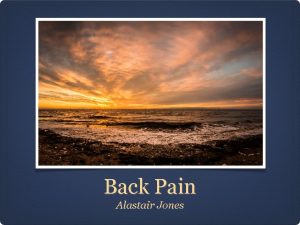Assessment of Pain Assessment and Management of Pain





















- Slides: 21

Assessment of Pain Assessment and Management of Pain in Special Patient Groups Dr Victor Mendis

Valid and reliable assessment of pain - Pain management - Clinical trials

CP assessment and its impact on physical, emotional and social functions Multidimensional qualitative tools Health related QOL instruments

Key components of an assessment Direct enquiry about the presence of pain including the use of alternative words to describe pain Observation for signs of pain especially in older people with cognitive/communication impairement Description of pain Measurement Cause of pain

Description of Pain Sensory dimension - nature - location and radiation - intensity Affective dimension - emotional response to pain(fear, anxiety, depression) Impact - functional activities - participation (work, social activities, relationships)

Measurement of Pain Using standardised scales that is accesible to the individual

Pain Scales COMFORT – unconscious/ventilated children CRIES - ventilated neonates MOBID-2 - Pts with severe cognitive impairement ABBEY

Cause of Pain Examination Investigations

Assessment of Pain in Pts with Communication Problems/Dementia UK – pain or discomfort in > 50% over 65 years Higher prevalence in institutionalised older people. 45 -83% had at least one current pain problem

Communication Problems due to: Language Extremes of age Critical illness Dementia

Disorders that affect cognition Neurodegenerative(Alzheimers, Parkinsons, Huntingtons) Vascular (stroke, embolic disease) Traumatic Toxic (CO, adverse drug events) Anoxic Infections ( HIV, encephalitis)

Typical pain locations in the elderly Degenerative spine disease, OA Polyneuropathy/ PHN Cancer pain

Particularities in elderly Pts ) (Even if adequate pain medication provided inadequate pain control Communication problems Compliance (practical problems: impaired vision, motor skills, dry mouth, memory, > 1/5 fail task of opening drug packages, reduced + thinking ) Availability of opioids and risks of prescription Comorbidity

Pharmacokinetic changes: -reduction in P 450 -reduction in plasma proteins - dangerous drug interactions due to reduced renal function

Best Practices Formalised approach to management, assessment and reassessment Organisational standards for collaborative and interdiciplinary approaches Pharmacological and non pharmacological strategies to alleviate pain Individualised pain control plans

Pharmacological Mx Principles When pain detected, institute treatment rapidly Use scheduled rather than “as needed” dosing Titrate Rx to pain levels and assess verbal, behavioural and functional response Choose regimen that will mitigate common side effects

Non pharmacological Mx in Cognitive Impairement – “ integral part” Physical exercise CBT Acupuncture TENS Manipulations Heat, cold, massage Distraction techniques Appropriate pacing Sensory calming and stimulating techniques

Important points AD does not affect the threshold for pain perception Vascular dementia may heighten perception of pain Potential of unrelieved pain is greater in those who cannot verbally express discomfort Pain, depression, agitation can exacerbate one another Side effects of pain Meds more prevalent in pts with dementia Most important reason for inadequate Pain Mx is lack of assessment

Pearls of wisdom No evidence that the elderly have less pain or need less analgesics Pain is underdiagnosed in the elderly Elderly pts act in a “socially acceptable” manner NSAIDS/paracetamol first choice (Risk !!) Opiods analgesics of choice for strong cancer pain

Coanalgesics in individually selected patients Non pharmacological Rx strategies always be implemented if feesible End of life decisions should respect the wishes of the patient Start slow- go slow

 Madpain
Madpain Period cramps vs early pregnancy cramps
Period cramps vs early pregnancy cramps Early period symptoms
Early period symptoms Chapter 7 nursing management of pain during labor and birth
Chapter 7 nursing management of pain during labor and birth Pain fundamentals of nursing
Pain fundamentals of nursing Pqrst pain assessment
Pqrst pain assessment Pqrst pain
Pqrst pain Pqrstu pain assessment
Pqrstu pain assessment Capa pain assessment tool
Capa pain assessment tool Wilda pain assessment
Wilda pain assessment Nips pain scale
Nips pain scale Comprehensive pain assessment
Comprehensive pain assessment Canadian c spine rules
Canadian c spine rules Pqrst pain scale
Pqrst pain scale What is pain
What is pain Jarvis chapter 11 pain assessment
Jarvis chapter 11 pain assessment Pain management doctors that accept soonercare
Pain management doctors that accept soonercare Pico examples
Pico examples Pain management stony brook
Pain management stony brook Iu health pain management
Iu health pain management Ruben gonzalez vallina
Ruben gonzalez vallina Nonpharmacologic pain management nursing
Nonpharmacologic pain management nursing



